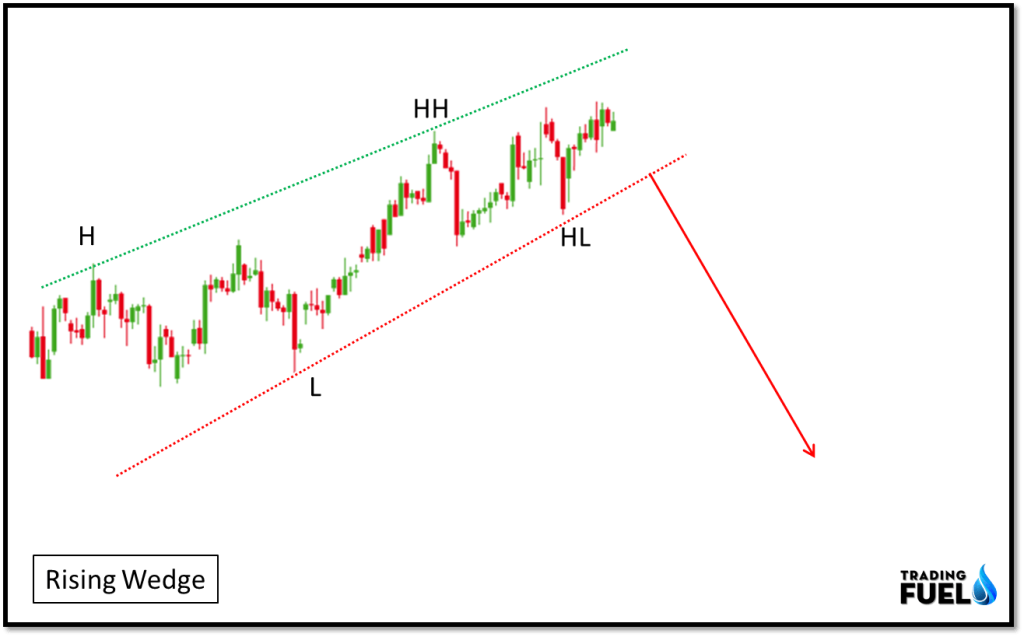
To limit potential loss when price suddenly goes in the wrong direction, consider placing a stop order to buy back a short position or sell a put option at or above the breakout price. Formation height is the difference between the highest high and lowest low within the pattern. To identify an exit, compute the target price for a Rising Wedge formation, take the highest high as the downward Breakout point and subtract the formation height to it. Consider selling a security short or buying a put option on downward breakout. If the price breaks out from the bottom pattern boundary, day traders and swing traders should trade with the trend DOWN. Stock passes any of the below filters in futures segment: Stock passes all of the. In our case, a Rising Wedge is a price action zone, bound between upward sloping support and resistance lines. There is a distinct possibility that market participants will sell out, and the price can move down with big volumes (leading up to the breakout). This pattern is commonly associated with directionless markets since the contraction (narrowing) of the market range signals that neither bulls nor bears are in control. Rising wedges are bearish signals that develop when a trading range narrows over time but features a definitive slope upward.


It’s the opposite of the falling (descending) wedge pattern (bullish), as these two constitute a popular wedge pattern. It forms when the price is making higher highs and higher lows, which appears by a contracting range in. This may be seen by drawing two rising trend lines, one steeper trend. During an uptrend, a rising wedge is a reversal pattern.

Unlike Ascending Triangle patterns, both lines need to have a distinct upward slope, with the bottom line having a steeper slope. The rising (ascending) wedge pattern is a bearish chart pattern that signals an imminent breakout to the downside. Appearance: The rising wedge pattern is a contracting trading range with an upward tilt. The Rising Wedge pattern forms when prices appear to spiral upward, with higher highs (1, 3, 5) and higher lows (2,4) creating two up-sloping trend lines that intersect to form a triangle.


 0 kommentar(er)
0 kommentar(er)
